
Administrator • 5yrs
Lyfas Founder and CEO Rupam Das On Building An Instant, Non-Invasive Mobile Tool To Detect Heart Attack Risk
Back in 2016, we featured our favourite CEan Mr. Rupam Das in an exclusive interview on CrazyEngineers (Read Here) This engineer turned entrepreneur has a knack for finding technology powered solutions for real life complex problems. This time around, he has forayed into the world of healthcare and his new startup Lyfas aims at helping doctors detect heart attack risk using a mobile device.
In this exclusive interview with CrazyEngineers, we hear about how Rupam Das built Lyfas from scratch and what are the lessons he has learned as an entrepreneur.
Read on and be inspired!
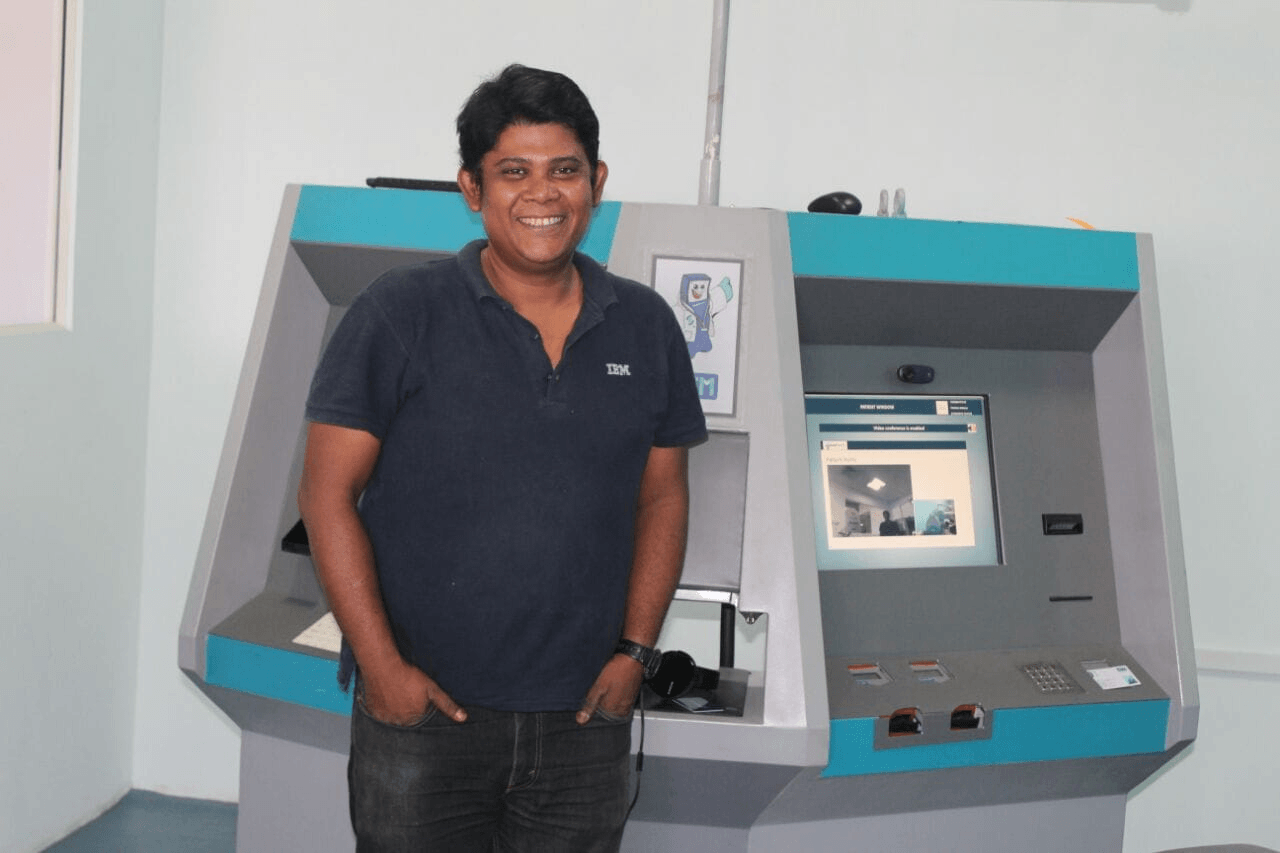
Q. Last time we talked to you, you were running Integrated Ideas, a Research and Development Consultancy company based out of your home-town Gulbarga in Karnataka. You talked briefly about the Rainbow app. How was your experience running those? And where is Integrated Ideas today?
Rupam: Integrated Ideas has almost been part of my identity. This is the company I have nurtured and grown over the years. The operations are now much more startup-focused and teams have diversified. I do have to dedicate some time in the company though not full time.
Rainbow was an educational venture which was focused at gamification of classroom teaching through smart classes. Though we had a good momentum and few kidzee adaptation in no times, the simple fact that marketing and purchasing window of such academic application is limited made it difficult to scale. No schools can adapt a solution in the middle of an academic year and hence we decided to discontinue due to commercial scaling challenge. Otherwise Rainbow was one of the fastest products I have worked in to hit to market and commercialized.
We built the system, created complete course of Maths, science upto upper KG in two months and had 4 lakh in revenue on the third month. Education along with healthcare are two areas which I passionately believe must see drastic changes to meet the challenges of the future.
There are some extremely contrarian ideas in education that Integrated Ideas is working on. They will probably surprise many in times to come.
Q: When did you first start thinking about Lyfas? Tell us about how the idea came together?
Rupam: My father gave up on life after years of struggling with diabetic which included amputation, two bypass, renal failure and other severe health issues on 2008. At that time, I had some abstract ambition of building a strong technology driven diagnostic solution. If you track my works since then, I had several computers aided diagnostics including various imaging techniques and ECG analytics, many of which are in public domain.
However, what really changed and dragged me full time into clinical diagnosis was a blog I read in 2016 by a Keral doctor that read something like “I will allow my daughter to be a pole dancer but not a doctor”. That blog went viral and created very strong emotions, both positive as well as negative.
That writeup really made a lot of difference in the way I thought about medicine and doctors as a whole. Consider this, as par Indian medical association almost 75% of the Indian doctors are assaulted by patients. A doctor’s life is hard. They are arguably the most talented of their class. They probably would spend most of their growing up years studying and building their intelligence and intellect. MBBS is extremely hard and unlike engineers who can hope to get some kind of jobs and make a good career even after 4 years of mediocre education, MBBS doctors have no bright future. An MBBS doctor in India if seek a job would earn less than a plumber. He then had to struggle hard for the masters, the entrance of which is no cakewalk either. All along junior doctors will get continues duties.
I have spoken to few doctors who says that post MBBS days, they would be happy to get 3-4 hour of sleep in two days. There will be continues duties. Will you be allowing your driver to drive for 24 hours straight? But, a doctor is expected to be top of his game even after 48 hours. And many says that often the juniors would be sent to face the families to convey the bad news which would makes them vulnerable to anger and rage.
And here in IT we talk about stress if our working hour extends beyond 10. So, probably till the age of 33 a doctor would study, sharpening the skills and art of medicine. When most of their friends from college might have already had family and got settled they would start their “career”. Add to that the fact that we now thank God when we recover from a disease and blame doctors when things go wrong. Doctor bashing has become such a fashion that a 10th grade Bollywood actor can take 10 crore and advise doctors on TV as how to be ethical.
Most of the senior doctors I had interacted with would donate their weekends on free camps, will distribute sample medicines to needy patients, all along donating inhuman labor. I know a dermatologist in AIIMS who sees 600 patients daily in OPD. You can’t do this for money, you simply can not. A doctor is able to do this purely for the love and passion for the profession and people. And while interacting with them post that blog I realized that one of the major issues of them was to grow their practice, get some extra time for themselves and their family. They would often have access of no technology to assist them in their diagnosis.
If he advises costly tests, patient would complain that the doctor is greedy and is making money from pathology test referral. If he doesn’t and anything goes wrong, the patient would complain that the doctor diagnoses without much tests. And often, patients would go to local pharma shops to get some medicines till the disease is no more manageable. They would go to a doctor only when their condition has progressed and difficult to cure. Thus leaving the doctors to be safer and try to manage the disease and pain instead of be little aggressive in curing. You see there is no motivation for him to be innovative.
This is when I decided that as technologists, we must try to address the concerns of one of the most important social pillars called doctors. Many people talk about connecting doctors with patients, having electronic records, building better and costlier equipment.
I thought if we can offer better diagnostics to the doctors without adding to his investment, help him reduce time and stress of decision making, help him keep his patients and grow patient base through technology and gift him or her even an hour extra in their everyday life, that would be a good service. It was around that time the idea of low cost diagnostics to the doctors was perceived. All the algorithms and methods that were developed from 2008 discretely, which would then get integrated into a system which would go on to be called Lyfas.
Q. What is the one critical problem that you are trying to solve with this product?
Rupam: To enable doctors with a non-invasive instant early diagnostic that would not need any investment and worry of complex compliances. Make the solution scalable and available to doctors anywhere anytime (Just like their stethoscope and with much more power). And the area this is specialized in cardiovascular diseases.
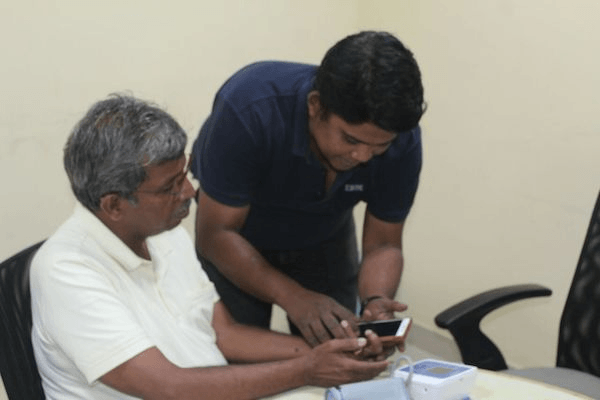
Q: What is the Lyfas tool? How does Lyfas work? What are the benefits of using it?
Rupam: Lyfas is a non-invasive mobile diagnostic app where when a patient keeps his index finger for five minutes the system gives a powerful overview of the Autonomic system, cardiovascular system, blood biochemistry system, muscle system, pulmonary system, auto-immune system and endocrine system of the body. You can say that Lyfas is the “smallest diagnostic lab” of the world.
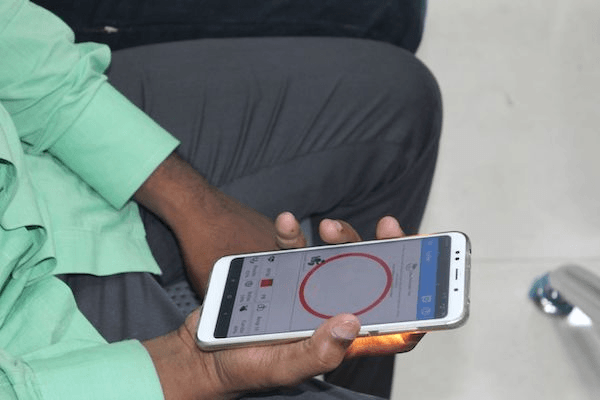
It works on the principle of photo-plethysmography which analyzes the change in light spectrum in the capillary(junction of arteries and veins).
Lyfas is the most sensitive tool to detect sub-clinical Atherosclerosis and Endothelial dysfunction therefore detecting current and future heart attack risk better than most of the contemporary technologies available today.
Atherosclerosis (blockage in the blood vessels) leads to coronary artery disease and myocardial ischemia (death of heart muscles due to lack of oxygen) which is becoming an epidemic in India. The diagnosis tests are so costly that rarely a doctor advises them at the early stage.
Atherosclerosis is reversible both with Homeopathy and as well as with allopathy medicines if somehow doctors can detect when the artery blockage is say 50%. Unfortunately, because we do not have such widely accessible technologies today, the condition remains undiagnosed before the blockage is over 70% when the chest pain or angina starts setting in. It is when the heart muscles have actually started struggling due to lack of Oxygen and there is no going back!
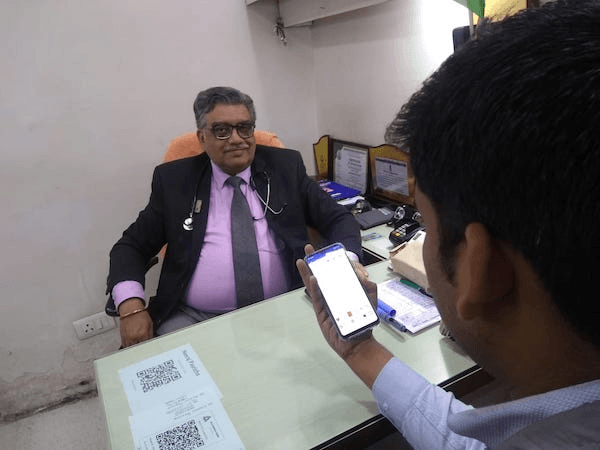
So Lyfas today enable clinicians to detect this menace effectively and early and help them take better clinical decisions. We also diagnose a few more things very effectively, but let that be a secret known to our doctors only.
Q: How is your tool different and unique than any other product that came before it?
Rupam: I haven’t seen any team to be as lesser focused towards Atherosclerosis and Myocardial Ischemia as we are.
Yes, you are right there have been several mobile apps that takes pulse from finger, offers heart rate variability and many such patterns.
What separates Lyfas from anything else in the mobile space is that never ever before Lyfas clinicians could use and rely on a mobile tool for clinical decision making. Instead of going to easy direction of wellness like many of our competitors, we remain focused to solve problem of the doctors which is effective early diagnostic decision making.
Look 90% accuracy can be built by 1000 companies, 95% would be attained by say 10 companies, 98% would be reached by 3 and 98.5% to the gold standard would be attained by only one company. It is easy to build 10 things that are 90% accurate but extremely hard to build one thing which is close to 100% accurate.
Q: Tell us about your team. How did you go about hiring people for this project?
Rupam: I love to learn and remain as student. So our team comprises of all people who are better than me in most aspects. Instead of talking about our team, I would like to mention a bit about how so many people has helped me, became part of this mission.
Dr. Parimal Swamy is instrumental in building Lyfas. This project would have never had completed had he not being the clinician part of the team. His vast knowledge in intervention science and in Diabetology and prolonged technology adaptation and understanding meant that I had to just focus on writing code of a medical concept and condition that he would explain me in a language that I can understand.
My wife Moumita as many of you know has always been the embedded girl. She has always been better than me in IoT, hardware, managing projects and operations. So she takes care of that part. Also when the better half of you takes care of finance and stand by you in your pursuits, magic happens. There are countless people who have helped me with their advises and knowledge in whatever small or elaborated interaction we have had.
For instance Dr. Devishetty in our meeting explained me why we should focus on capillary based measurement. Mr. Arun Seth helped me to understand what is the importance of a proper organizational structure and how focus is necessary. Milind sir, who is founder of Vitor health has always inspired me, motivated me, scolded me, and always encouraged me to go for the gold. Mr. Ponappa explained us the importance of having a communication clarity and communication that doesn't suck. Dr. Tarun helped us with market positioning and targeting.
My Intel Software Innovator team of Abhishek Nandi, Sourav Lahoti, Pooja Baraskar, Arun Margesh and the program manager Wendy Boswell always stood by us throughout our journey, providing necessary hardware and other supports. Rajesh Jaypal is a technologist from IBM who started using Lyfas in all public forum for data acquisition and brought us good developer connect.
Manish Dugar told me the importance of "dhanda" and why "bechoge kaise aur kisko" are the important questions to answer. Hitesh sir from ICICI and entire team of ICICI innovation center Mumbai like Kushal, Rishi have helped us beyond their duty. Mr. Bhanuchandran continues to help us with sales and brings his years of pharma experience into play.
Mr. Gopinath helps us to be financially disciplined. Mr. Narendra backed our hardware project and entire team of Vinyas worked so hard to realize the hardware project. My other team mates Hari, Rishi all are focused to the mission.
If I do not mention the help I got from medical community, this interview would be incomplete. Every doctor I meet has blessed me with their vast diverse knowledge. Be it Dr. Renu Mathani who highlighted the lifestyle intervention in medicine, Dr. Navneet Nischal who has helped us with screening aspect, Dr. Jia, Dr. Pasricha, Dr. Shailaja, Dr. Satbir and many other doctors.
I do also have a mentor who is like Shri Krishna, who has blessed me with his knowledge, strategic pushing, my overall psychological and emotional intellect and instrumental in the change that was needed in thought process to take this project forward. Let him be a “ghost” figure I can write a book one day about all the people who helped Lyfas to grow!
Q: How has the initial response been like for the product?
Rupam: Look, making a great product is the easiest part of a business in today’s time where technology is easily available and accessible. But to take that product to a competitive market, slice out a segment for yourself and crack the market is hard.
With new product, users are skeptical, there are group biases and there is this need to “not to be wrong” more than “to be early and right”. Having said that I always believe that market penetration follows a counter intuitive model. If a market is easy enough to crack, it is not worth enough to crack.
We are fortunate to have so many early adaptions. It has been tough, to break the mental barriers of the doctors and their patients as well. The good thing is when you have a great product that just does what it says it does and does solve a problem that not many are solving, you do get your fair share of market even at an early stage.
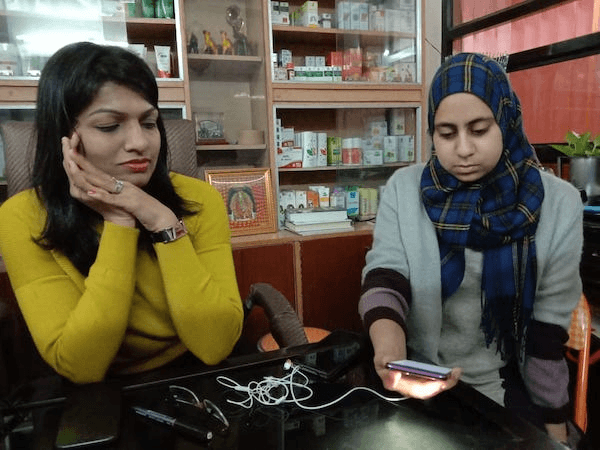
Delhi, Jabalpur and Gaya are three places where we are live. It is a controlled market so that we can make controlled mistakes, learn and correct ourselves before ready for mass market.
Q: Foraying into the medical world for a computer science engineer can be a real challenge. What were the biggest challenges you faced?
Rupam: You see business is about people and connecting with them with empathy. If startup is a Hero’s journey as they say in storytelling, you are not that hero. Your client is. If you can create a story around your client as hero and the problem, they are facing as a really big conflict and then become that friend of the hero to help him overcome the conflict and succeed than you will invariably win the game.
I wouldn’t want to say that it has been easy for me and my team. Particularly the tech guys like me are more comfortable slogging it behind a screen than leading a team and be in the front.
The best thing that had happened was that I convinced myself that it is nothing about me or my team or Lyfas. It is about the doctor who are our clients, understanding them and be empathetic to them. This has helped us to be welcomed by a difficult system. You will be surprised to know that most of the clients we have are the ones who discovers us and seek help. We just try to solve their problems more accurately and efficiently.
From my integrated ideas experience I have learnt that your business will be successful if your clients can discover you and come to you. We only try to be discoverable.
Hence it has been hard, but nothing that was beyond usual challenges. I really want to thank the doctors who became our teachers, mentors, guide, friends and like our extended family. “Client” will be an inappropriate English word for the relationship we have with our users.
Q: What are the life lessons that entrepreneurship has taught you?
Rupam: The story of your life is not about you, it’s about the people around you. I, like a normal human being get into “I” mode more often than I would want to but it doesn’t take long to get back into the story!
Q: If given a chance to change any one thing, what would you do differently in your career?
Rupam: I wouldn’t want to change anything, or do anything differently. If anything needs to be changed I still have time to see that it changes. I have been consistent with my work ethics, donning 14-18 hours daily since last 16 years and would want to persist with the same tenacity.
I have learnt various skills like blogging, hardware hacking, vlog, video editing, web development, marketing, teaching, research, technical writing and used them to the best of my abilities to solve different problems along with my core skill which is coding. Though my career hasn’t been a millionaire’s journey, it has been an extremely entertaining journey filled with challenges, opportunity to improve and becoming better at each day.
The major drawback that I personally feel I have is I am not too good with people in a managerial environment and at times either get too close or too distant with people. I would want this one aspect of my “self” to be changed in the future. With empathy comes strong emotions which sometimes lead to decisions that are more emotional.
Q: Tell us about your life as an entrepreneur. What is your advice to young engineers?
Rupam: I do not know if I am qualified enough to advise young engineers beside suggesting to learn the subjects in depth which probably I said even in my last interview with you.
Having said that I can say few things that helps me. It is to be very serious about the work ethics, the relentlessness in doing what ought to be done.
Once you make sure that you put more hours than your other peers and part of that hourly investment goes to your own growth in knowledge and skill enhancement and if you sustain long enough, you will eventually win. Not having Television at home since 2011 has immensely helped me, don’t know if this fact is something that might help others or not.
Following are some of the exclusive quotes I wrote for you.
1. Perception - In startup hero’s journey, founder is not the hero, it is the client.
2. Banking - Most private bank's minimum monthly balance in India is more than two year's net revenue of a stratup.
3. Finance - In India most startups are to sustain and build a business at a cost less than an iPhone.
4. Documents - Xerox must fund all Indian startups because the amount of document copy needed by the startups in India may well be contributing to a large revenue share of the company.
5. Investment - A class V urban kid in India gets more annual investment from parents than most startup who are expected to do billions in revenue manage to rise from investors.
6. Patent - By the time an Indian startup gets the time to think about the intellectual property, either the intellectually does not exist or the property is encroached.
7. Operations - The most important business of an Indian startup is often to just remain in business.
